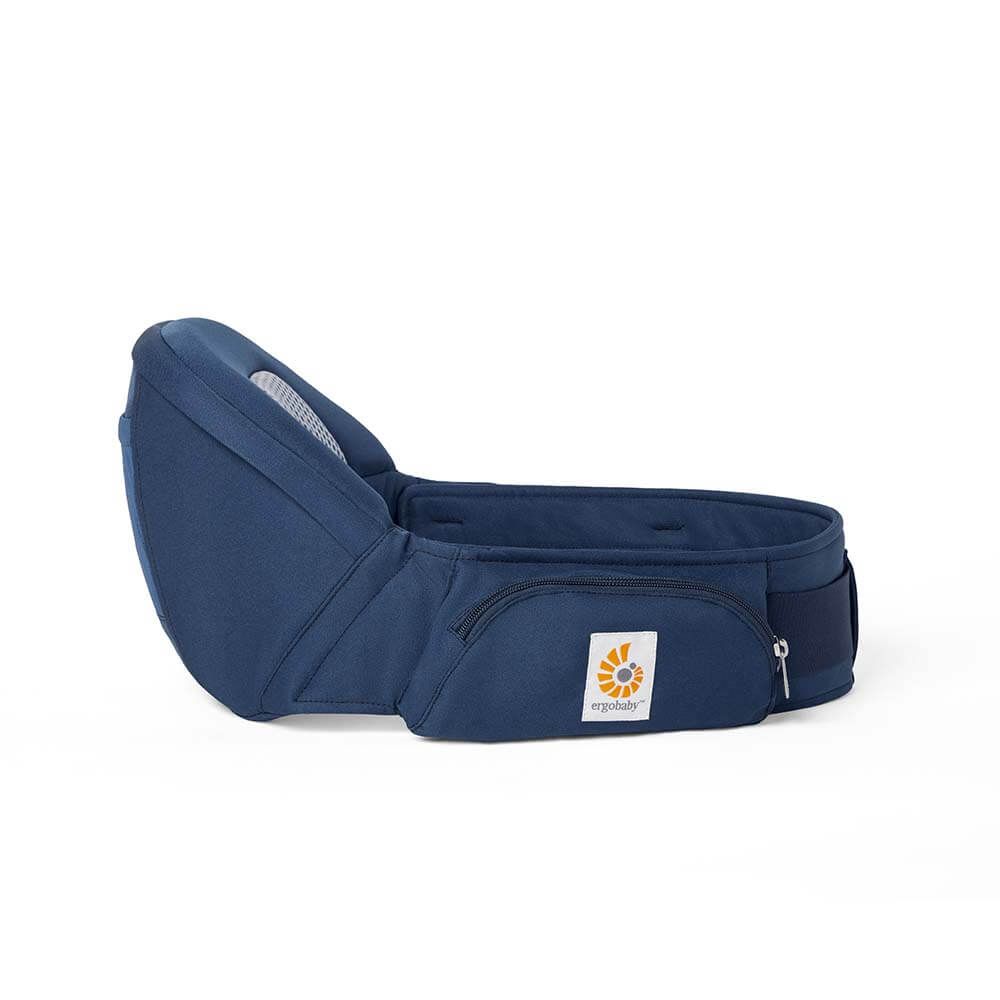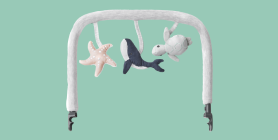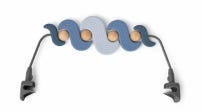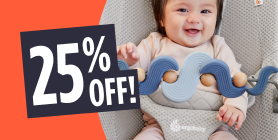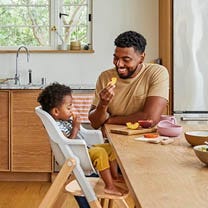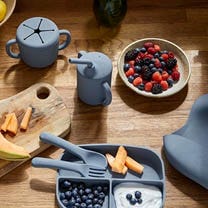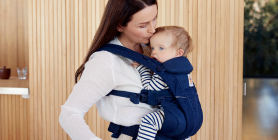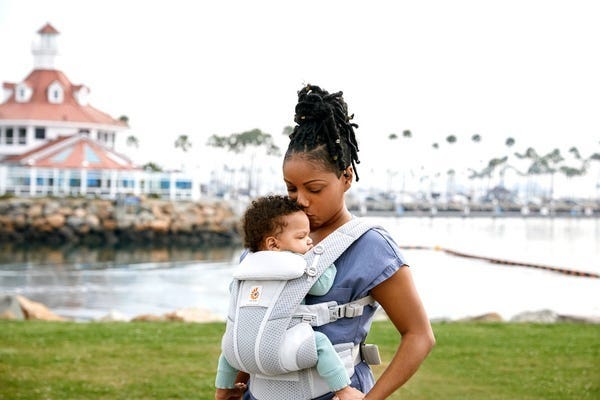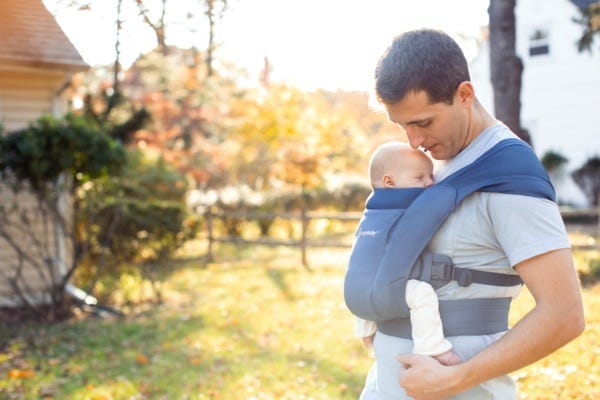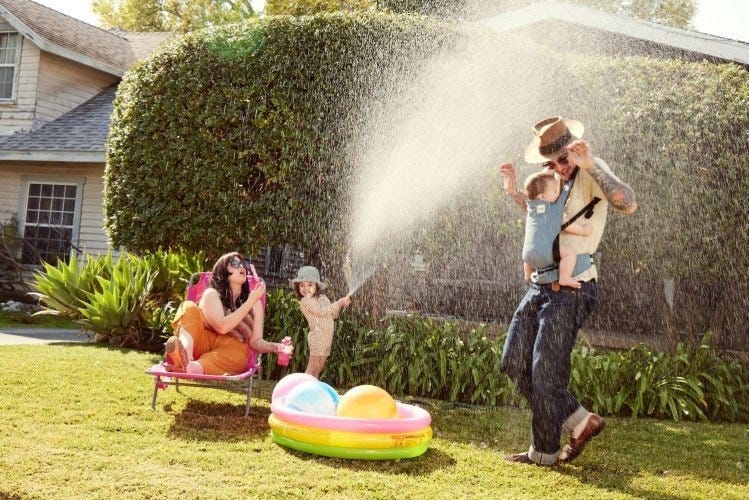When should you start feeding your baby solid foods and what should you feed her?
- Start feeding solids to babies between 4 and 6 months.
- Introduce new foods 3-4 days apart.
- Try foods several times.
- Try several textures and flavors.
- Avoid foods that can cause choking.
“The first year is a great time to introduce a variety of foods with different textures and tastes before the “picky eating” ages of 2 and 3 begin.” Christanne Harrison Introducing Solids: Time for Tofu (and Other New Foods) When my son started kindergarten, I asked him what he wanted in his lunch on his first day of school. He quickly responded, “Tofu squares!” He came home and proudly told me his teacher said that she had never seen a kindergartner with tofu in his lunch before. I started feeding my son tofu before he was a year old, and he has loved it ever since. Obviously, not all children are going to like tofu when they are introduced to it, but the first year is a great time to introduce a variety of foods with different textures and tastes before the “picky eating” ages of 2 and 3 begin.
- Start feeding solids to babies between 4 and 6 months. When your baby seems interested in taking food from a spoon, add a small amount of fortified baby cereal (like rice cereal) to her feeding routine a few times a day. At first your baby will only take a small amount of solids (like 1 tablespoon), but work toward the goal of three solid meals by the time she is a year old.
- Introduce new foods 3-4 days apart. At about 6 month, you can start adding additional foods to your baby’s diet. Add a new food (usually starting with strained vegetables and fruit) every 3-4 days to easily detect if your child has a food allergy.
- Make your own baby food. The bottled stuff is convenient, so it is OK to have some on hand, but it is less expensive, more varied, and has fewer fillers when you use what the rest of your family is eating. At first, mash fruits and vegetables by themselves and then by the time your baby is 7-9 months, she can probably eat most mixed food from your table as long as it is the appropriate texture.
- Try foods several times. Don’t get discouraged if your baby doesn’t seem to like the food you are feeding her. It may take 10 times or more before a baby learns to like a new food. Also remember that your baby is learning to eat and at the beginning it will look like she is spitting the food out as she is trying to coordinate her movements. Don’t add extra sweeteners (especially honey as it could contain botulism spores that would be very dangerous for babies) or salt to your baby’s food if possible, so that she can learn to enjoy the taste of the food.
- Try several textures and flavors. As your baby grows she will be able to handle more challenging textures. Start with pureed foods and then mashed, building up to small pieces. When your baby can sit up and bring her thumb and pointer finger together (called a pincer grip), you can let her try finger foods to feed herself. You can start with small, soft pieces of food like fruit or bread. Offer your baby a variety of different foods (even if you don’t like them) to expose her to a wide range of flavors; try avocado or navy beans.
- Continue breast milk or formula for the first year. Even though you are adding solid food to your baby’s diet, continue to feed her breast milk or formula until she is a year old.
- Avoid foods that can cause choking. Make sure that food is cut into small pieces, especially foods like grapes and cherry tomatoes. Avoid small hard foods like popcorn, hard candy, and nuts. Soft sticky foods like marshmallows or peanut butter can get stuck in a baby’s throat. Always stay with your baby when she is eating so that you will know if she starts to choke.
- Follow your baby’s cues. If your baby does not seem satisfied after her normal food routine, she may be telling you she is ready for more. You can add more food to each meal or add more meals during the day.
- Use feeding time to bond with your baby. Teaching a baby to eat can be time-consuming and messy. It may seem that more food gets on the floor and in the baby’s hair than in her mouth. Be patient and remember that this can be a special bonding time with your infant: you can talk, sing, or just enjoy each other’s company.
Crispy Tofu Squares When infants are trying tofu for the first time, just cut it into small squares and serve. As they get older, you can try this version with some additional flavors (it is also great in stir-fry for the whole family).
- 1-14 oz package of firm or extra firm tofu
- 2 Tablespoons low-sodium soy sauce
- 2 teaspoons sesame seed oil
- ¼ teaspoon garlic powder
Drain tofu and cut into 1-inch squares. Let tofu drain on paper towels for 5-10 minutes. Meanwhile, mix together the remaining ingredients. Place the tofu in a bowl and pour the liquid mixture over it. Gently stir until all the tofu is coated. Let sit for 5 minutes. Spray a large baking sheet with cooking spray. Using a slotted spot, place tofu onto the baking sheet and spread them evenly so the pieces are not touching. Turn on the oven broiler. Place the tofu under the broiler until brown and crisp on the top, approximately 8 minutes (oven broiler temperatures and times may vary). Gently turn pieces of tofu to another side and broil for 3 more minutes. Remove from oven and let cool completely. Serve.
Emotional Benefits of Getting Outside
Spending time in nature with your baby can strengthen the bond between you. The simple act of holding your baby close, feeling their warmth, and sharing new experiences together can create strong emotional connections. It’s also a wonderful way to reduce stress and improve your mood. When my littles were extra fussy, I’d take a walk around the neighborhood. Even though I don't live in an area with trails and surrounded by nature, simply behind outside changed everything. A little vitamin D does wonders!
Cognitive Development
Nature is a sensory wonderland for babies. The different sights, sounds, and smells can stimulate your baby’s senses and promote cognitive development. Watching leaves rustle, hearing birds chirp, and feeling the texture of a tree bark can all contribute to their learning and development.
All About Baby Carriers for Nature Adventures
Choosing the Right Baby Carrier
When it comes to selecting the best baby carrier for summer adventures, there are several options to consider.
Types of Baby Carriers:
- Wraps: Perfect for newborns, providing a snug and secure fit.
- Slings: Ideal for quick and easy use, offering good ventilation.
- Soft Structured Carriers: Versatile and comfortable for both parent and baby, suitable for longer trips.
Factors to Consider:
- Baby’s Age and Weight: Ensure the carrier is appropriate for your baby’s size and weight. For example, Ergobaby’s Embrace Newborn Carrier is perfect for the fourth trimester where baby is small and you’re looking for an easy way to stay close. As they grow, you’ll want to upgrade to an all-position carrier that’s meant for growing babies.
- Parent’s Comfort and Ergonomics: Look for carriers with padded shoulder straps and lumbar support if you’re planning on longer outings.
- Ease of Use: Choose a carrier that is easy to put on and take off.
- Climate and Breathability: Opt for carriers made of breathable fabrics to keep you and your baby cool in hot weather.
Safety Tips:
- Proper Positioning: Ensure your baby is seated correctly, with their legs in an "M" position and their head should be close enough to kiss.
- Checking for Wear and Tear: Regularly inspect your carrier for any signs of damage.
- Ensuring Adequate Support: Make sure the carrier provides proper support for your baby’s head and neck.
Exploring Nature with a Baby Carrier
Ideal Spots for a Nature Walk with Baby
- Parks and Gardens: Great for leisurely walks and picnics.
- Nature Trails and Forests: Perfect for more adventurous outings.
- Beaches and Lakesides: Wonderful for enjoying the water and sand, with the right carrier.
Activity Ideas
- Hiking: Enjoy a scenic hike with a hiking baby carrier that offers support and storage.
- Bird Watching: Use your carrier to keep your baby close while you explore and observe wildlife.
- Picnics: A carrier can free up your hands, making it easier to carry picnic supplies.
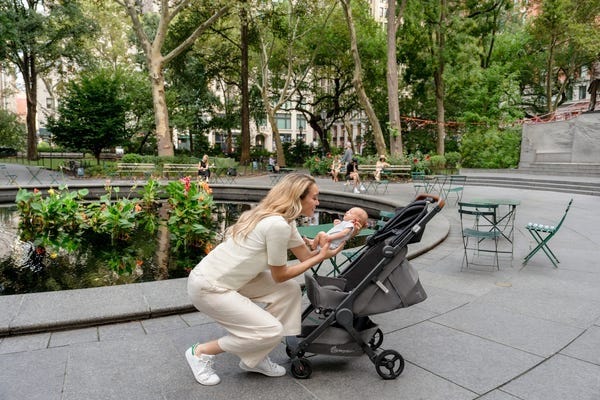

Advantages of Using Strollers for Nature Adventures
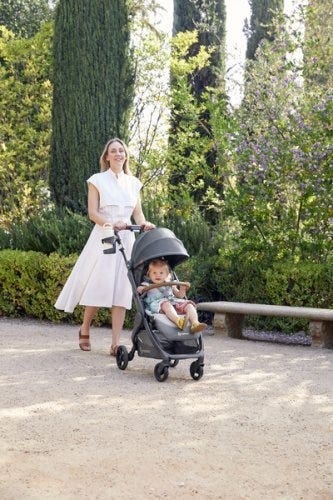

While baby carriers are fantastic for mobility and closeness, depending on the adventure of choice you might want to be a stroller along too.
There are a LOT of baby stroller options on the market. So we understand how confusing it can be to choose the one that’s right for your family. Not only are there a variety of brands, but a variety of strollers that serve different purposes.
There are a few types of strollers on the market:
- Full-sized stroller: This is typically the stroller parents thing of buying for all its versatility.
- Lightweight or umbrella stroller:These compact strollers are perfect for on-the-go adventures.
- Jogging stroller: Designed for parents who want to combine fitness with outdoor adventures.
- Double stroller: Designed for parents with multiple kids, especially twins.
- Car seat carrier: These strollers connect to a specific car seat. We don't typically recommend these as they can be unsafe for baby and uncomfortable for parents who are pushing.
Learn more about the types of strollers and which one would be best for you.
Benefits of Bringing a Stroller
- Storage Space for Gear: Ample room for carrying all your essentials like a diaper bag, beach toys and more.
- Shade and Weather Protection: Built-in canopies to shield your baby from the sun when they are lounging.
- Options: If you have more than one kid, you can stroll with one and carry the other. Or, if you’re getting warm or your little one is getting fussy, you can switch up their position from stroller to carrier or vice versa.
Safety Tips for Strollers
- Ensure your stroller is in good working condition. Make sure buckles are still buckling and that there are no rips or holes that could compromise your baby’s safety.
- Use sunshades or bug nets to protect your little one’s skin.
- Securing the baby properly: always buckle up your baby for safety even if you think they are old enough to go without the buckle.
Combining Baby Carriers and Strollers
For the ultimate flexibility, consider using both a baby carrier and a stroller on your outings.
Combining both options allows you to adapt to different situations. Use the carrier for more rugged trails and switch to the stroller for smoother paths or when your baby needs a nap.
Transition Tips
- Smooth Transitions: Plan stops where you can easily switch from carrier to stroller.
- Pack Light: Only bring essentials to make transitions easier.
Tips for a Successful Adventure
Planning Ahead
- Route Planning: Choose baby-friendly trails and parks. Check local mom groups or outdoor groups and get recommendations for the best outings for kids.
- Check Weather Conditions: Avoid extreme heat or unpredictable weather. Even with our most breathable carriers, when it’s hot, it’s hot. And having two bodies against each other in the heat will be naturally hot and sticky already.
- Packing Checklist: Include diapers, snacks, water, sunscreen, and a first-aid kit. These all-position carriers have storage pockets where you can fit some of the items easily!
- Stay Hydrated and Nourished: Pack healthy snacks to keep energy levels up and bring plenty of water for both you and baby.
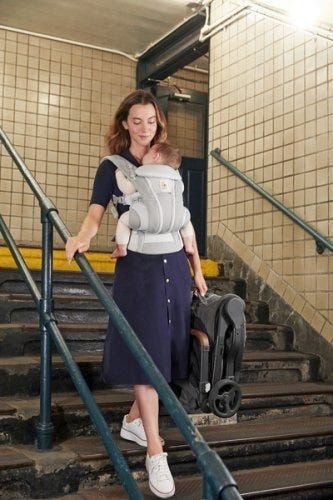

Summer adventures with your baby are a wonderful way to create lasting memories and enjoy the beauty of nature together. From baby carriers to strollers, Ergobaby products are designed to provide comfort and ease for both you and your little one. So, gear up, get outside, and explore the world with your baby by your side.
Ready to embark on your own summer adventures? Check out Ergobaby’s range of baby carriers and strollers to find the perfect match for your family’s needs. Visit our website today and start planning your next outdoor excursion!





